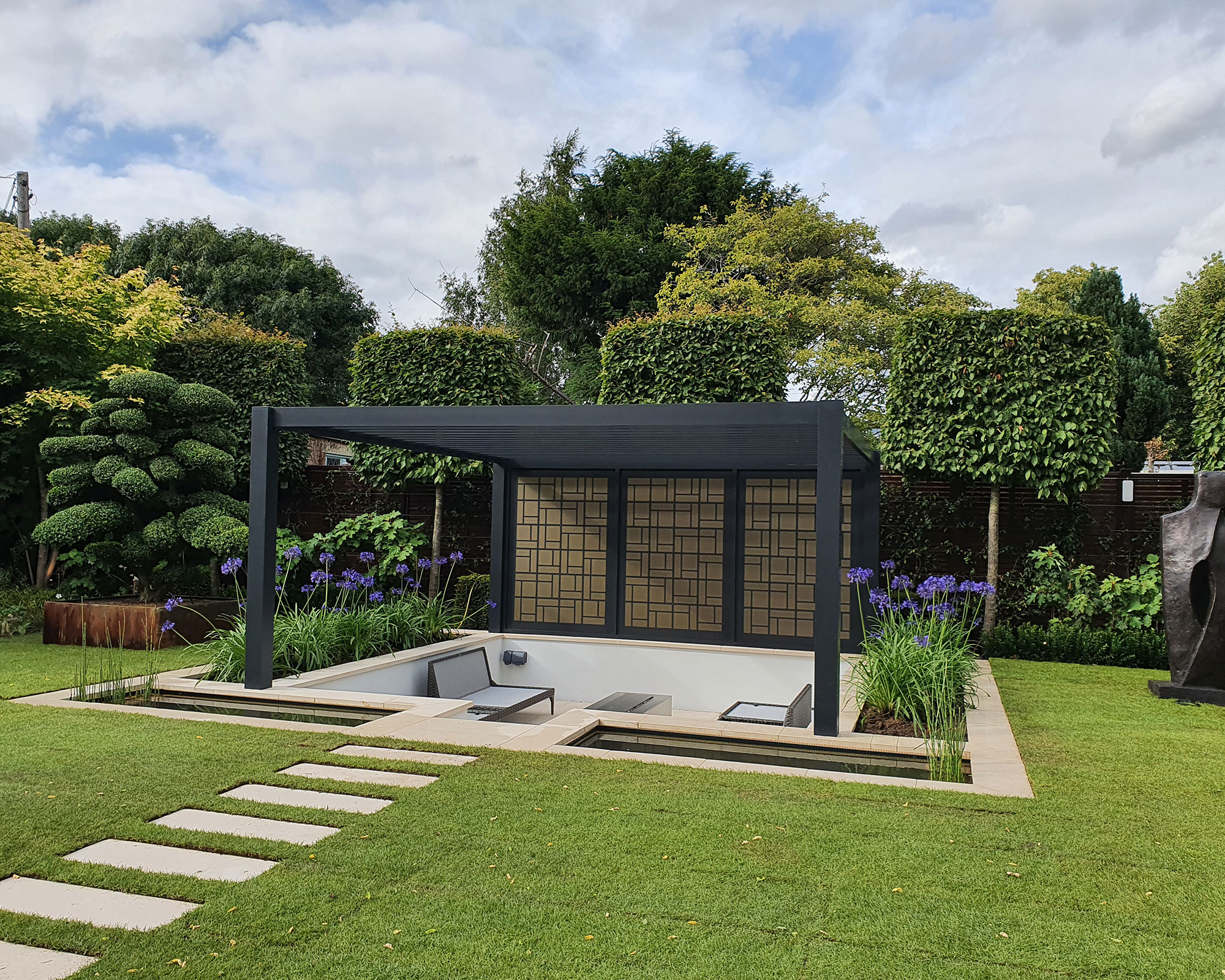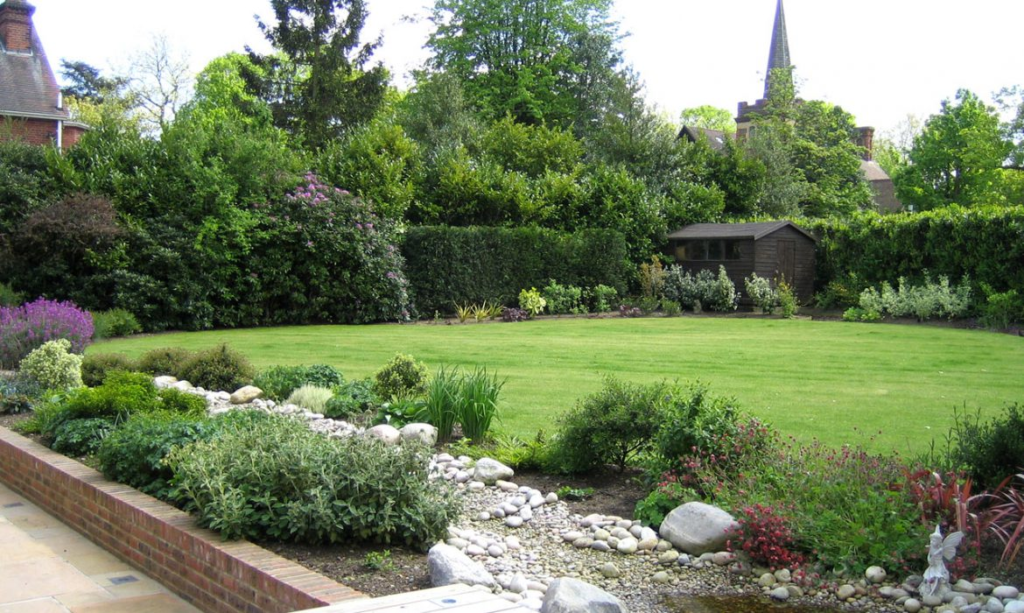3 Simple Techniques For Hilton Head Landscapes
Wiki Article
4 Simple Techniques For Hilton Head Landscapes
Table of ContentsThe Buzz on Hilton Head LandscapesFascination About Hilton Head LandscapesThe 6-Second Trick For Hilton Head LandscapesThe Basic Principles Of Hilton Head Landscapes Things about Hilton Head LandscapesHilton Head Landscapes for BeginnersHilton Head Landscapes for DummiesAn Unbiased View of Hilton Head Landscapes
Type compatibility is additionally a significant component of unity in designone or 2 strikingly different types are good for contrast and focus, but normally all other types need to have some resemblances for a merged look. Texture describes exactly how coarse or great the surface of the plant or hardscape material really feels and/or looks.
Examples of plants with crude texture include philodendrons, agaves, bromeliads, hollies, hands, and hydrangeas. Hardscape with crude structure includes rough-cut stone, rough-finished brick, and unfinished timber with knots and an increased grain. Aged or old construction material that maintains a weather-beaten surface area is commonly crude in appearance. Features that produce fine texture include tiny vegetation; thin, strappy leaves (turfs) or tall, thin stems; little, dense twigs and tiny branches; long stems (creeping plants); and little, delicate flowers.
Things about Hilton Head Landscapes
Many plants are medium appearance, in that they can not be described as having either crude or fine texture. Medium-textured plants act as a history to web link and combine the coarse- and fine-textured plants.
To make an area feel smaller, place the coarse appearances along the outer border and the fine structures closest to the customer. The information of the rugged structure makes the plants show up closer and makes the space feel smaller. The regarded appearance of plants can also alter with the range from the plant.
Getting The Hilton Head Landscapes To Work
Bold colors boost the comparison and make the texture show up coarser, while low-key shades can flatten structure. Hardscape with a crude texturesuch as really rough rocks and bold, large timberstends to make all plant product appear extra moderate textured. Developers frequently develop an appearance study (Figure 8) on paper to aid decide the arrangement of plant products.Number 8. Structure research. Color in plant material and hardscape includes rate of interest and variety to the landscape. Shade is the most conspicuous component in the landscape and is generally the focus of most house owners; however, it is likewise the most short-term element, normally lasting just a few weeks a year for specific plants.
5 Simple Techniques For Hilton Head Landscapes
A simple description of the shade wheel consists of the three primaries of red, blue, and yellow; the three additional colors (a mix of 2 primaries) of green, orange, and violet; and 6 tertiary colors (a mix of one surrounding key and second shade), such as red-orange. Color concept discusses the connection of colors per various other and how they need to be made use of in a make-up.
Similar (often called unified) color pattern are any kind of 3 to five colors that are adjacent on the color wheel, such as red, red-orange, orange, yellow-orange, and yellow, or blue, blue-violet, and violet (landscaping hilton head sc). The colors relate to every various other since they commonly consist of two primaries mixed to develop an additional and 2 tertiary shades, which suggests they share common properties
They often tend to have high comparison between them. One of the most typical collections are violet and yellow, red and environment-friendly, and blue and orange. Complementary colors are frequently discovered naturally in blossoms; an usual set is yellow and violet. Shade is discovered in the blossoms, foliage, bark, and fruit of plants.
Hilton Head Landscapes Fundamentals Explained
Eco-friendly vegetation in all its numerous tones is the leading shade by quantity, yet various other shades catch attention quicker because of their high contrast to the color eco-friendly. Color is likewise found in structures, rocks, pavers, timber, and furnishings. Most shades in natural products, such as rock and timber, are generally low-key and tend to be variations of brownish, tan, and light yellow.Color is a vital aspect for developing passion and selection in the landscape. Colors have properties that can impact emotions, spatial assumption, light quality, balance, and emphasis. One home of color is described about temperaturecolors seem cool or warm and can influence feelings or sensations. Awesome shades have a tendency to be relaxing and must be utilized in locations for leisure and tranquility.
Hilton Head Landscapes Fundamentals Explained
The "temperature" of shades can additionally influence the understanding of range. Awesome shades have a tendency to recede and are viewed as being further away, making an area really feel bigger. Warm shades have a tendency to advance and are perceived as being more detailed, making a space feel smaller sized. Color can additionally be used to record interest and straight sights.Bright yellow, which has the highest possible strength, also has a high contrast with all other shades (usually described as a "pop" of shade) and need to be utilized moderately. A percentage of intense shade has as much aesthetic weight as a large amount of a much more suppressed or weaker shade.
Analogous (occasionally next called harmonious) shade systems are any three to 5 colors that are surrounding on the shade wheel, such as red, red-orange, orange, yellow-orange, and yellow, or blue, blue-violet, and violet. The shades are relevant to each other due to the fact that they typically consist of 2 primaries blended to create an additional and 2 tertiary colors, which indicates they share typical residential or commercial properties.
The 7-Minute Rule for Hilton Head Landscapes
Complementary colors are usually discovered naturally in flowers; a typical pair is yellow and violet. Shade is discovered in the blossoms, foliage, bark, and fruit of plants.Green vegetation in all its numerous shades is the dominant shade by amount, but other colors record interest extra easily as a result of their high contrast to the color environment-friendly - Landscapers near me - https://www.tumblr.com/h1tnhdlndscps/754928253939187712/family-owned-and-operated-hilton-head-landscapes?source=share. Shade is likewise located in structures, rocks, pavers, timber, and furnishings. Many colors in natural materials, such as rock and timber, are typically soft and tend to be variations of brown, tan, and light yellow
Examine This Report about Hilton Head Landscapes
Shades have residential properties that can impact feelings, spatial assumption, light quality, balance, and focus. Awesome shades often tend to be calming and ought to be used in areas for leisure and calmness.Amazing shades have a tendency to decline and are regarded as being farther away, making an area really feel larger. Shade can also be utilized to capture interest and direct views - https://www.intensedebate.com/profiles/stevenagonzales.
Bright yellow, which has the highest possible strength, also has a high contrast with all various other shades (typically described as a "pop" of shade) and need to be made use of moderately. A percentage of intense color has as much aesthetic weight as a large amount of an extra controlled or weak color.
Report this wiki page